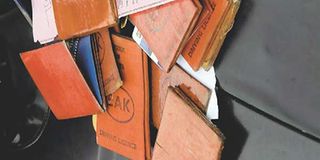WORLD OF FIGURES: Why smart-card driving licences not best idea

After several years of planning, the National Transport and Safety Authority (NTSA) announced it will roll out the smart-card based driving licences. PHOTO | FILE
What you need to know:
- After several years of planning, the National Transport and Safety Authority (NTSA) announced it will roll out the smart-card based driving licences.
- Unfortunately, this comes at a time when smart cards are being replaced by smart-phone applications – so-called “Apps”.
- I think NTSA should borrow from the Independent Electoral and Boundaries Commission and Kenya Revenue Authority: do away with physical driving licences and replace them with virtual ones residing in a central database.
There is a basic truth about university education: no university in the world can offer degree courses on the latest technologies.
The reason is that the process of designing and approving a programme is so long that, by the time it is completed, technology has moved on and the course outdated!
The same can be said about government services.
The bureaucratic process of designing and approving a service can take so long that, by the time it is launched, it will be outdated.
After several years of planning, the National Transport and Safety Authority (NTSA) announced it will roll out the smart-card based driving licences.
Unfortunately, this comes at a time when smart cards are being replaced by smart-phone applications – so-called “Apps”.
I think NTSA should borrow from the Independent Electoral and Boundaries Commission and Kenya Revenue Authority: do away with physical driving licences and replace them with virtual ones residing in a central database.
The licences would be organised by National Identification (ID) numbers of the owners – the same way voter details are kept. For the purpose of inspection, all NTSA and traffic police officers would be issued with smart phones containing a verification App.
When stopped on the road, drivers would be required to produce their ID and the officer enters the number into the smart phone. In a few seconds, all the relevant data is downloaded for inspection.
This data may include a current photography of the driver, classes of vehicles licensed, conditions for driving (e.g. ‘must wear spectacles’) and restrictions imposed by courts of law, renewal status and so on. The system may be extended to monitor the actions of traffic officers by requiring them to enter observations made during the inspection and action taken. This would reduce instances of harassment of drivers.
When a driver needs a printed copy of the licence, for example, when applying for a job, they would log-in on the e-citizen internet portal and print one on normal paper.
Since most of the infrastructure for such a system is already in place, I think this is a much easier system to implement than the smart card.
Over to you, NTSA.
***
In June this year, I wrote that there wasn’t enough money allocated in the national Budget for rolling out free day secondary education in 2018. I was happy to read in the press that an additional Sh25 billion has been earmarked for this purpose in the proposals put before parliament.
Currently, children in boarding schools are paying Sh21,169 and day scholars Sh9,374 according to government regulations. With approximately 2 million boarders and 500,000 in day schools, total annual requirement comes to Sh47bn. Thus the Sh25bn will be just enough to cover the costs up to June next year. My only worry is that delays in disbursement will leave many schools in a serious cash crunch.
www.figures.co.ke Twitter: @mungaikihanya




